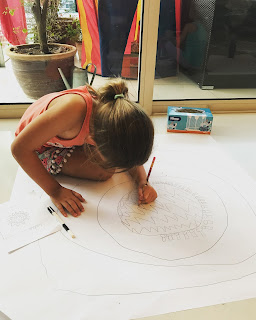Fascinating article!
Yoga promotes physical health, decreases
stress levels, makes you less susceptible to chronic diseases, and helps
improve your DNA function?!
Yes, it's true. It has been scientifically
proven that yogic mindfulness practices can alter your DNA functions in
positive ways. These findings come from two separate studies conducted by
researchers at the University of Calgary, and at Harvard University.
Chris Kilham, who is an advisor to herbal,
cosmetic and pharmaceutical companies and a researcher at University of
Massachusetts Amherst, did a deep dive on the subject in this interview with
Fox News Health. Kilham states that, "we don't exactly know how [the DNA
change] happens, but we know that it happens."
The Harvard University study found that
yoga positively changes your cellular metabolic functions. Meaning that it
improves the way your body absorbs nutrients, and uses those nutrients to fuel
and sustain your body throughout the day.
The Harvard University study focused on a
group that trained in mindfulness meditation and used a control group that
practiced no mindfulness training at all. "After eight weeks, blood
samples were taken from both groups. The meditation group showed changes in
2209 genes, a very far-reaching effect. The genetic changes observed included 1,275
instances in which genes were up-regulated (their activity increased), and 934
cases in which the genes were down-regulated (their activity decreased). Many
of the genetic changes prompted by the yoga practice involved cellular
metabolism. This is the capacity of cells to utilise nutrients and oxygen, and
to generate energy. Those who practiced the yoga method showed improved
cellular metabolism, and better cell function overall."
Additionally, the University of Calgary
study found that yogic practices help extend life. So, when you take this
information, and you add in the information found at the University of Calgary,
you find that yoga practices improve your cellular metabolism (which decreases
your body's ability to become sick or suffer from genetic degenerative problems
later on), and also help extend the life of your DNA cells.
Kilham explains in his interview that these
benefits, generally speaking, are only applicable to those who practice yoga
regularly. He says, just like the benefits of physical exercise, these DNA
boosting benefits will fade if your practice drops.
http://yoganonymous.com/yes-yoga-can-modify-your-dna?utm_source=YNON+ALL&utm_campaign=06d9c7a5c1-YNON_Monday_Magic_3_27_17&utm_medium=email&utm_term=0_9fab1b9259-06d9c7a5c1-121249902&ct=t(YNON_Monday_Magic_3_27_17)&mc_cid=06d9c7a5c1&mc_eid=9c4d95c63f
Also www.soyoga.com.sg




